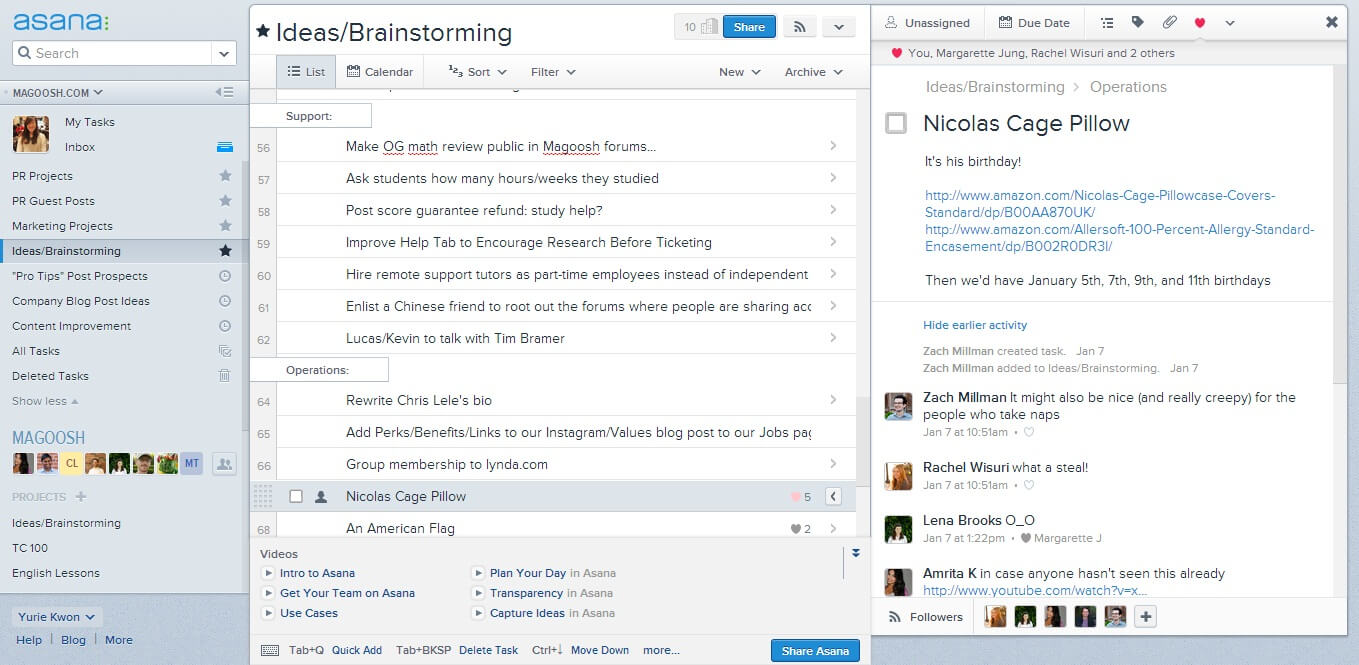As a small staff dependent on the diverse input of all its members, we know that the best ideas can come from anyone on a team. The product team doesn’t always have the best product ideas; the marketing team doesn’t always have the best marketing ideas; and so on. And more often than not, the best ideas are the result of a conversation among Magooshers across different teams. Because of this, we constantly adapt our process to ensure that we bring out the best ideas from everyone on our staff.
Brainstorming during the “coffee-machine” days
In our very early days, when we were just three people sitting around a small table, eating lunch together everyday, the brainstorming conversations occurred regularly. Everyone knew what was going on with all aspects of Magoosh, and everyone could contribute. However, as we grew, this impromptu live conversation became less inclusive than we would have liked it to be. I found that people would often tell me their ideas during our weekly 1-on-1 meetings. As CEO, I became the gatekeeper of ideas and projects. If I remembered to advocate and push for someone’s idea, we’d do it. And if I forgot – even if it was an exceptional idea – then we wouldn’t do it. The idea and project prioritization process became arbitrary, affected by my mood – definitely not a good thing!
We realized that “water-cooler” (or in our case “coffee-machine”) talk was biased, favoring those who drank tea/coffee or spent time in the break room. Given that one of our core values is accessible > exclusive, we wanted to create a system that could include everyone on the team in the idea generation process, not just those with a propensity for drinking liquids 🙂
How Asana changed everything
Enter Asana. Asana is a project management tool. We basically use it as a shared to-do list, allowing each team member to see what everybody else is working on , and to jump in and out of conversations as needed.
We created a project in Asana called “Brainstorming.” In the project, people can add as many ideas as they want, no matter how vague or half-baked. It’s a safe zone. No idea in the brainstorming project should be criticized; it’s all about building on one another’s ideas. Since everyone can see all the tasks and participate in all the conversations, no one is excluded. Ideas that have come out of “Brainstorming” range from getting a Nicholas Cage pillow case for the office to making vocab flashcards featuring cats to creating SlideShares about the tests we teach.
Transforming ideas into reality
Once an idea becomes fully-formed – after the team virtually builds on it – anyone at Magoosh can advocate for it by moving that idea into the agenda for one of our weekly department meetings. For example, the cat-vocab flashcard idea turned into a blog post of GRE words featuring cat pictures that exemplify them, and it will be discussed in the next Marketing meeting. The general SlideShare idea became more concrete, and we actually delivered on it (average GRE scores for top universities), getting almost 10K views in two weeks. And the Nicholas Cage pillow case, well, that’s still sitting in “Brainstorming.”
At Magoosh, we understand that everyone is a source of innovative ideas that can help us continue to improve our products and wow our customers. Our open-to-all brainstorming process helps keep everyone in the company engaged, or at least those who want to be, and lets everyone contribute ideas without worrying about having those ideas completely thought through: startup brainstorming at its best.


